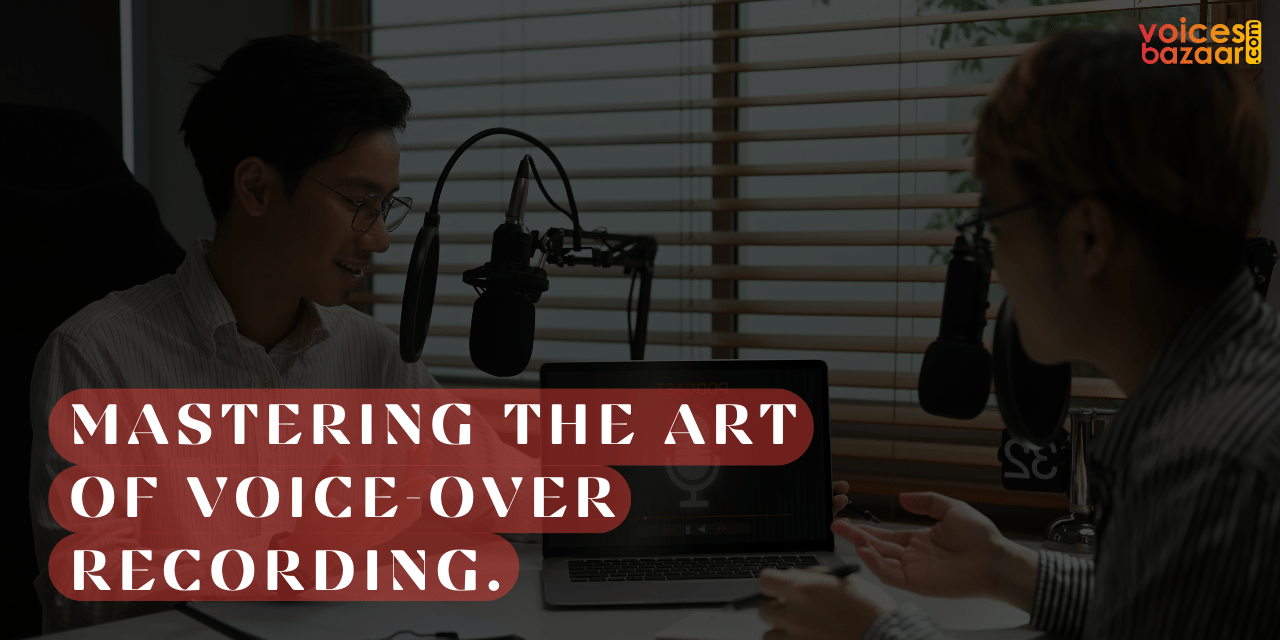Mastering the Art of Voice-Over Recording
2024-01-04

Mastering the Art of Voice-Over Recording.
In the world of audio production, a captivating voice can make all the difference. Whether you're a seasoned voice actor or a beginner looking to enhance your voice-over recordings, there are several key tips and tricks to ensure your studio sessions yield professional and impressive results. From voice preparation to mastering your recording environment, let's delve into the essentials that will elevate your voice-over recordings to the next level.
1. Voice Warm-ups and Exercises: Before stepping into the recording booth, it's crucial to warm up your vocal cords. Engage in vocal exercises to enhance your vocal range and flexibility. Simple scales, lip trills, and tongue twisters can help loosen your voice and improve clarity.
2. Hydration is Key: Proper hydration is essential for maintaining vocal health. Drink plenty of water to keep your vocal cords lubricated. Avoid excessive caffeine or alcohol, as they can lead to dehydration and negatively impact your voice.
3. Invest in Quality Equipment: A high-quality microphone is the heart of any voice-over recording setup. Invest in a professional-grade microphone that complements your voice. Additionally, a pop filter and a shock mount can significantly reduce plosive sounds and vibrations, ensuring a cleaner recording.
4. Optimize Your Recording Space: Minimize background noise by choosing a quiet recording environment. Consider using acoustic treatments like foam panels or bass traps to reduce echoes and enhance sound quality. Ensure your recording space is free from external disturbances to maintain a focused and clear recording.
5. Proper Mic Technique: As a voice artist, you should learn to control your distance from the microphone to achieve optimal sound quality. Experiment with different angles and distances to find the sweet spot for your voice. Avoid sudden movements or handling the microphone during recording to prevent unwanted noise.
6. Master the Art of Pacing: Effective pacing is crucial for engaging voiceovers. Practice reading your script at various speeds to find the ideal tempo that suits the content. Pay attention to pauses and breath control, allowing for natural and expressive delivery.
7. Script Familiarity: Familiarize yourself with the script before recording. Understand the intended tone, mood, and pacing of the content. This will help you deliver a more authentic and convincing performance.
8. Expressive Delivery: Inject emotion and personality into your voiceover. Conveying the intended emotions adds depth and relatability to your recordings. Experiment with tone, pitch, and inflections to capture the essence of the script.
9. Post-Processing Techniques: After recording, invest time in post-processing to polish your audio. Use noise reduction tools, equalization, and compression to refine the sound. Experiment with different settings to find the optimal balance without compromising the natural quality of your voice.
Conclusion:
Mastering the art of voice-over recording is a continuous journey of improvement. By incorporating these tips and tricks into your studio sessions, you'll enhance the quality and impact of your voice-over work. Remember, a well-prepared voice, combined with a suitable recording environment and quality equipment, is the recipe for success in the competitive world of voice acting. So, confidently step into the studio, and let your voice shine.
Written by: Nadia Gomes (https://www.voicesbazaar.com)
Think you've got what it takes to be a part of the #VoicesBazaarFamily?